January 17, 2023
The start of each new calendar year is a time to recap, recenter, refocus-and, if you’re involved in transportation research, to reconnect with 10,000 other research enthusiasts in the largest transportation research event of the year. At Kittelson, it’s a privilege for us to participate in the Transportation Research Board (TRB) Annual Meeting and be part of the conversations that both reflect and shape the future priorities of our profession.
The 2023 TRB Annual Meeting took place from January 8-12 in Washington, D.C. and truly was a time to reconnect, boasting the highest Annual Meeting attendee count since 2020. It was also a time to close chapters and celebrate new beginnings, being the last Annual Meeting for Senior Program Officer Richard Cunard, who has helped to shape what the event has become through his 40-year career with TRB, and the first Annual Meeting under the leadership of TRB’s new Executive Director Victoria Sheehan.
Since today’s research will impact the way tomorrow’s projects are approached, the themes that emerge from every Annual Meeting offer an important window into the future of our nation’s transportation systems. We polled our 60-person TRB cohort and compiled the six major themes that stood out to them from TRB 2023. Let us know if you have more to add!
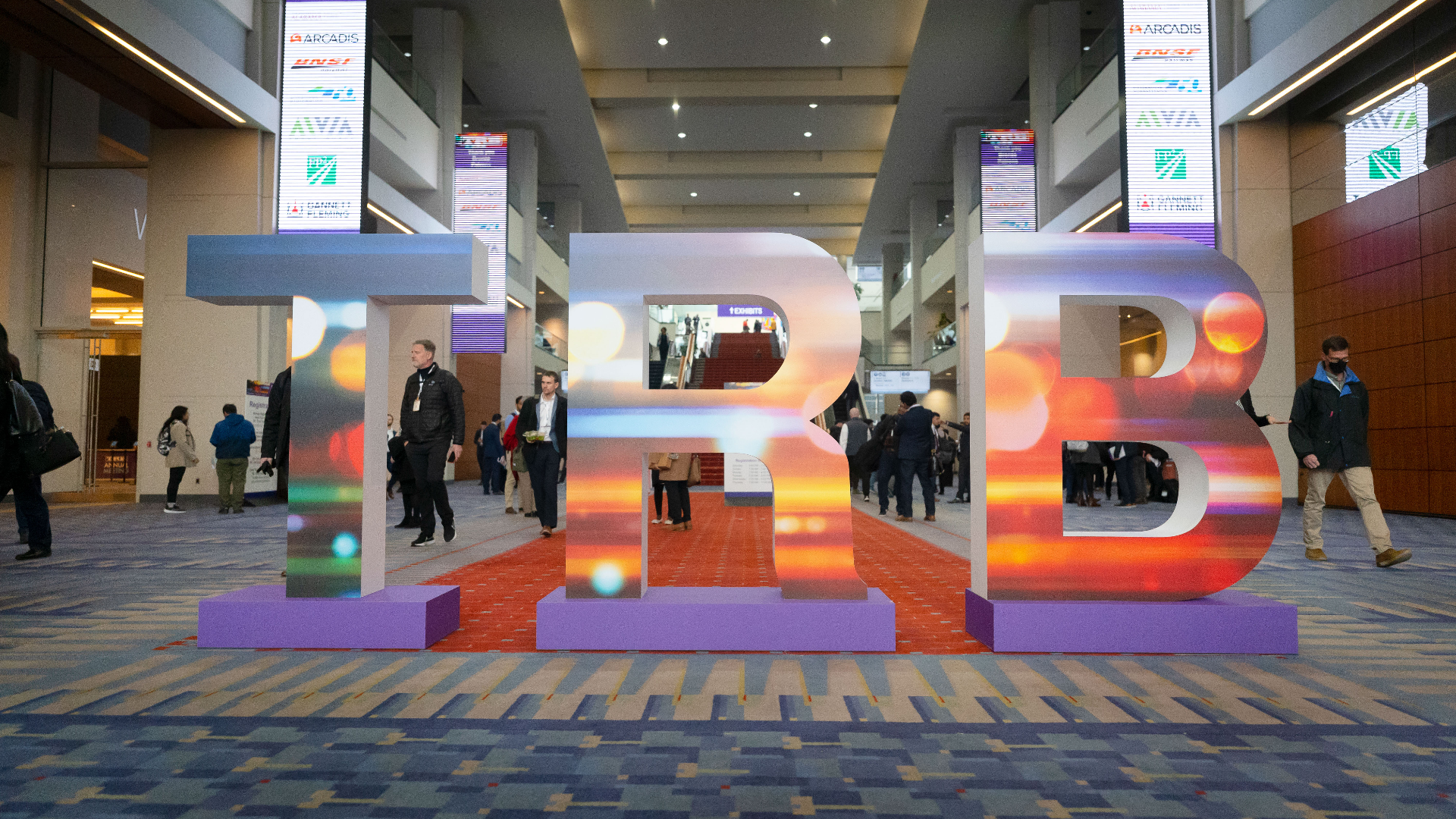
Since today's research will impact the way tomorrow's projects are approached, the themes that emerge from every Annual Meeting offer an important window into the future of our nation's transportation systems.
Safer Speeds for Safer Streets
Deserving attention at TRB was given to “the exceptionally American problem of rising roadway deaths.” While safety has always been a topic of importance at TRB, the Safe System Approach (and the USDOT’s National Roadway Safety Strategy based on that approach) is now at the core of the conversation.
A panel discussion on the National Roadway Safety Strategy began by showing roadway fatality rates per one million inhabitants in other countries: 4.6 deaths in Canada, 4.4 in Australia, and 2.2 in the United Kingdom. Panel moderator Lynda Tran then polled the audience for what they thought the US fatality rate per one million inhabitants was in 2021. The audience’s estimates were too low: the number was 12.9.
“We blindly accept that 43,000 people a year die on our roadways”¦ we don’t embrace the numbers as the crisis that it is. These numbers are terrifying and they are way too high,” said Ann Carlson of the National Highway Traffic Safety Administration (NHTSA). “One of the things I think we need to think about is, how do we make those numbers unacceptable?”
Agency panelists-Ann Carlson, USDOT’s Polly Trottenberg, Federal Highway Administration‘s Stephanie Pollack, and Federal Motor Carrier Safety Administration (FMCSA)‘s Robin Hutcheson-highlighted actions that are being taken by each organization, from grant programs for behavioral safety to stricter requirements for rear-impact guards on trucks. Repeatedly, however, the discussion returned to one paramount aspect of roadway safety: speed. In additions to actions from the National Roadway Safety Strategy, panelists talked about the culture shift that will be required for the US to see the rate and number of roadway fatalities finally start to drop.
“The cultural change needed is the balance between how much in a hurry we are to get places and the fact that going a little bit slower, literally is people’s lives are at stake,” said Stephanie Pollack. “And it isn’t just about people not driving as fast. It is about how we build roads. What is the purpose of a road? Too often in the industry we say, ‘We are trying to move people and goods. We are trying to move people and goods faster. We are trying to get more throughput for people and goods.’ We need to say, ‘We are trying to safely move people and goods-as fast as can be done safely.’ That means changing how we build roads.”
The presentations at Workshop 1003, “Urban Roadway Design: Time for a New Paradigm?”, also discussed the relationship between traffic speed and safety, noting how the AASHTO Greenbook and other traffic engineering documents inform unsafe designs by prioritizing speed over safety. The conversation didn’t stop there, advancing instead into an examination of how altered guidance can lead to better designs, followed by breakout sessions that each targeted different aspects of the guidance documents at play. Principal Planner Conor Semler facilitated a breakout session about cross-section dimensions-how, when there is well-developed guidance for cars but not for other modes, do we allocate street space in a way that is modally equitable? His table discussed introducing minimum dimensions for bike lanes and sidewalks to future guidance.
“My takeaway this year is that we are finally seeing a paradigm shift toward designing streets for safety,” said Conor. “We’ve been talking about Vision Zero for a number of years now, but this year I really noticed it permeate. We’re seeing engineers and planners from across the country embrace these concepts. Before we would say ‘safety is our top priority’ with the unstated implication ‘if traffic allows it’; now I’m seeing people understand that we can sacrifice traffic operations to achieve safety.”
"We are finally seeing a paradigm shift toward designing streets for safety."
- Conor Semler, Principal Planner
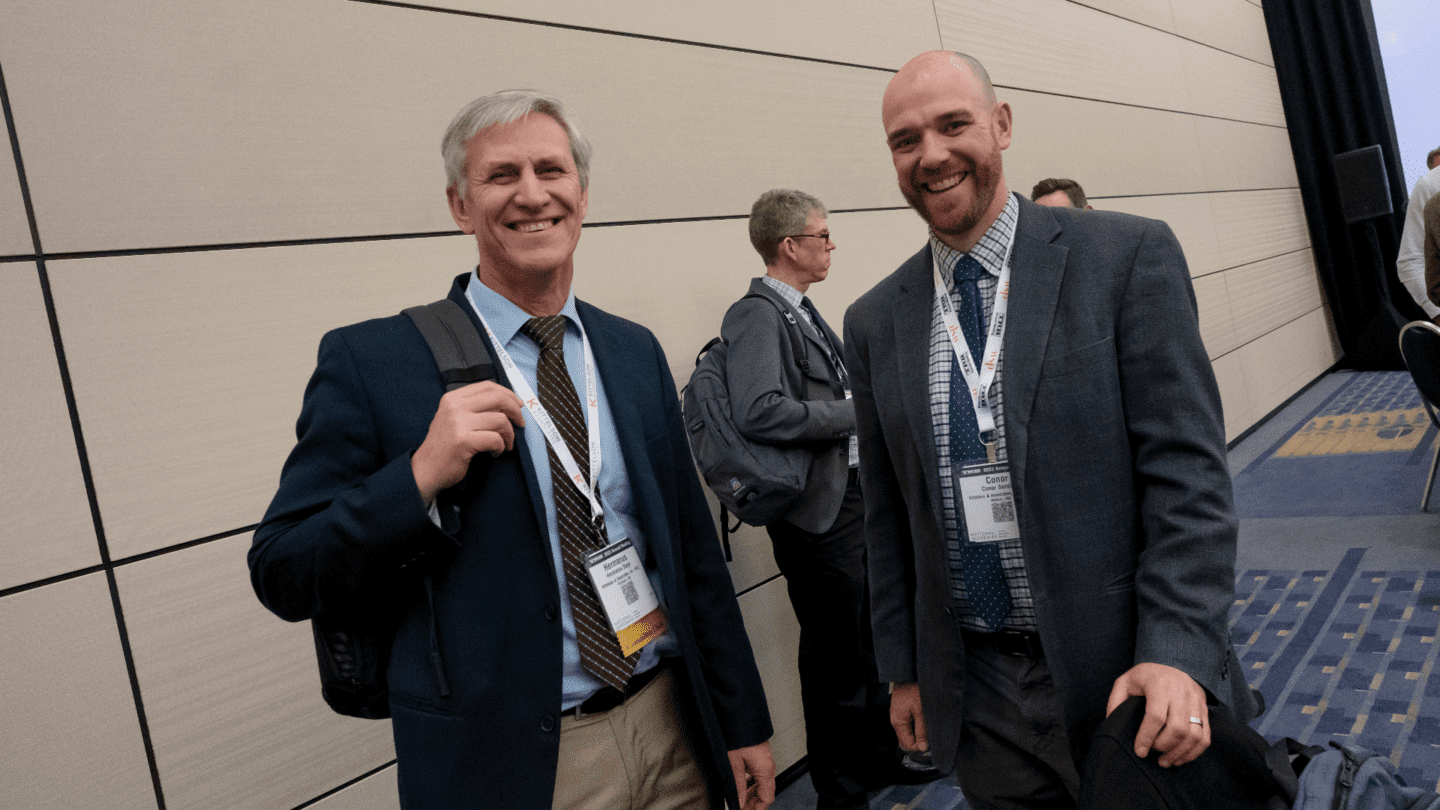
Hermanus Steyn and Conor Semler at Workshop 1003, "Urban Roadway Design: Time for a New Paradigm?"
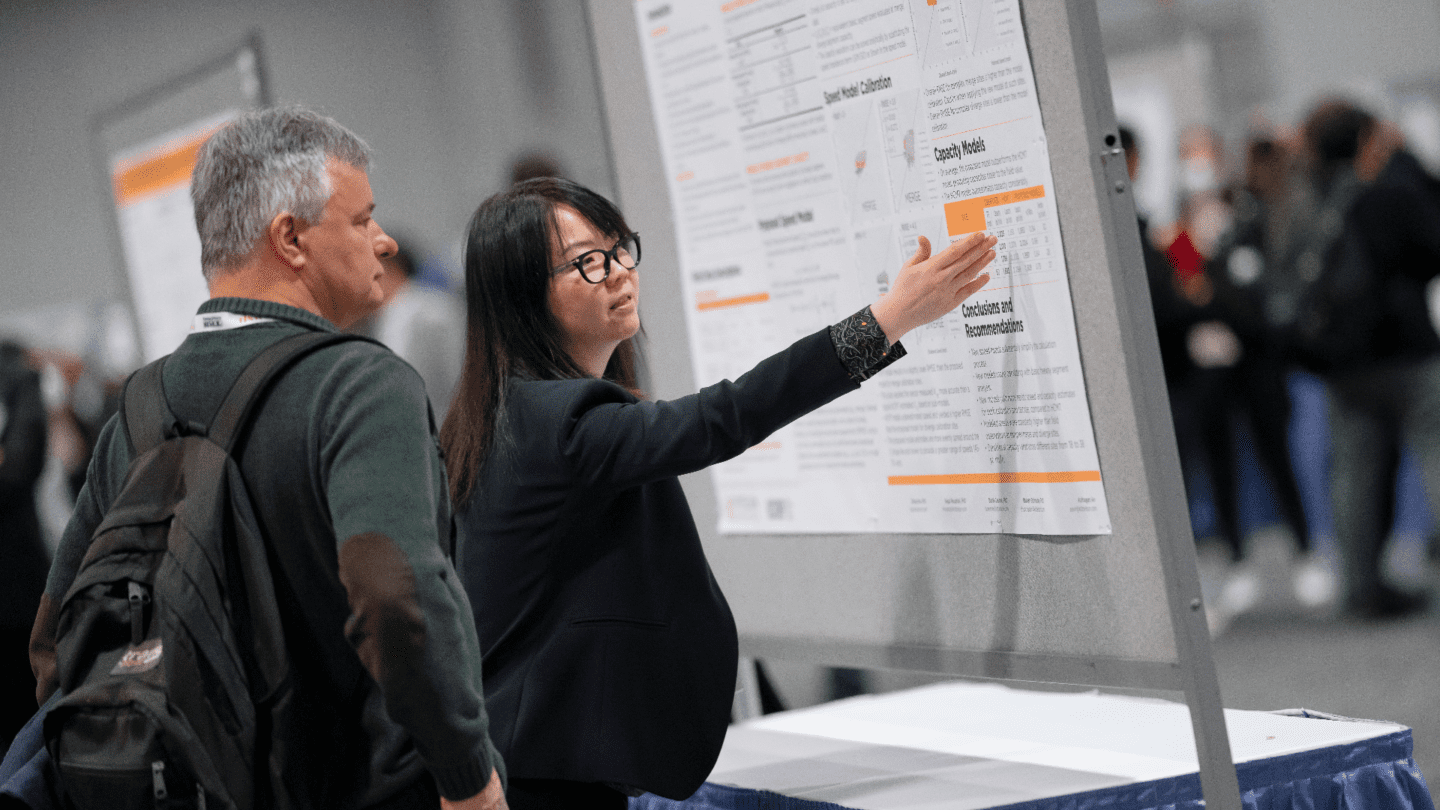
Lilian Wu presents a poster on NCHRP 07-26, research that is updating the HCM's merge and diverges methodologies. The research team developed new speed models that simplify the calculation process while also yielding more realistic speed and capacity estimates.
Moving Research into Practice”¦Today
At the State DOT CEO roundtable, “Developing a Resilient Transportation System for a Rapidly Changing World,” California State Transportation Agency (CalSTA) Secretary Toks Omishakin described 2022 as a year of “remarkable investment” due to the Infrastructure Investment and Jobs Act (IIJA) and called for 2023 to answer it by being a year of “remarkable implementation.”
“Now it’s time to actually deliver on all the money that we’ve been getting, make these things come to pass as we get the dollars we’ve been fighting for at the state and federal level,” he said.
In a recent blog post, we reflected on the need to get research projects past an “awareness” stage and into widespread implementation-and we’re not the only ones thinking about this! Changing the state of practice is hard, and just because a guidebook is available does not mean it will be used by practitioners. At the 2023 Annual Meeting, we felt a refreshing urgency behind the call to practice what we research, with sessions focusing specifically on getting safety and automated vehicle research into practice, and an emphasis on what can be implemented today.
“With the influx of IIJA funding and other infrastructure spending, the focus has changed to a much greater emphasis on implementing improvements that help people today. How do we improve safety now? How do we improve access to transportation for all people?” said Associate Engineer Matt Kittelson. “Equally as important, how do we get access to all this funding to actually deliver these projects?”
"With the influx of IIJA funding and other infrastructure spending, the focus has changed to a much greater emphasis on implementing improvements that help people today."
- Matt Kittelson, Associate Engineer
One way agencies can get ideas on the ground is through clearer communication that gets the attention of relevant industry players. Associate Engineer Abby Morgan, a leader of Kittelson’s Research & Innovation practice, said her key takeaway from TRB 2023 was the need for communities that are planning technology deployments to clearly communicate what they will deploy and their timeline-outside of a Transportation Improvement Plan (TIP) or State Transportation Improvement Plan (STIP). When agencies share their plans early and in a clear and concise manner, vehicle manufacturers and equipment vendors (who might not read the detailed funding plans) can learn about the intended deployments and work to deliver the technology that will be needed when the time comes for implementation.
Another way to get research off the shelf and into projects is the NCHRP Implementation Support Program (NCHRP Project 20-44), established to fund pilot projects and demonstrations that implement research findings. At the 2023 Annual Meeting, we were able to provide updates on a project sponsored by NCHRP 20-44 to mainstream research from NCHRP Research Report 948, Guide for Pedestrian and Bicyclist Safety at Alternative and Other Intersections and Interchanges, through developing case studies and delivering trainings.
“At Kittelson, our research is focused on moving the practice along,” said Senior Principal Engineer Bastian Schroeder, who serves as the firm’s national research director. “We see a tremendous amount of value in implementation activities and doing the training/tech transfer to get the guidebooks off the shelves and into the hands of practitioners.”
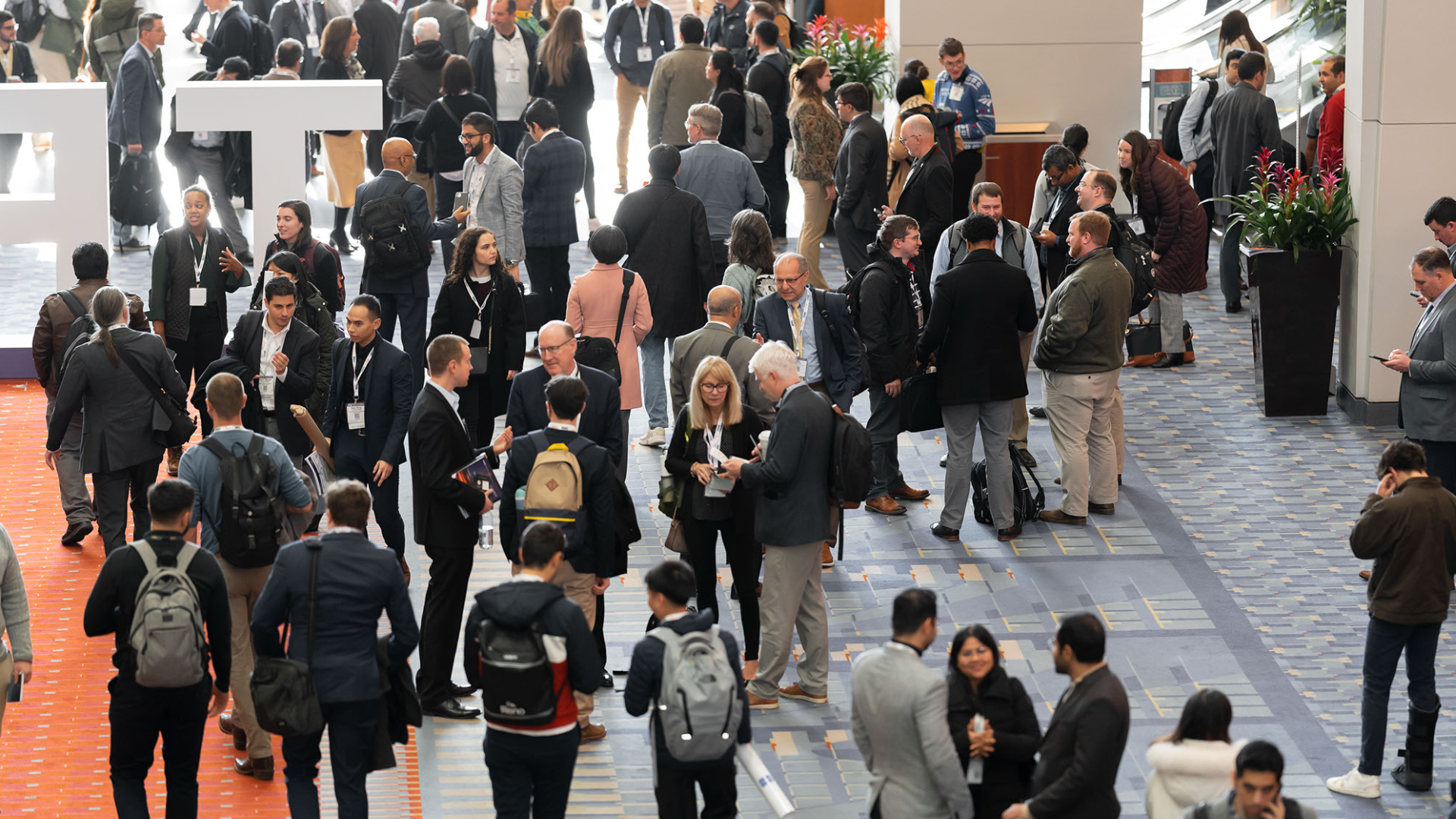
At the 2023 Annual Meeting, we felt a refreshing urgency behind the call to practice what we research, with an emphasis on what can be implemented today.
Electrification and the Conscious Alignment of Transportation and Energy
With electrification now taking center stage in the emerging technologies space, it’s more clear than ever how collaboration is needed between the U.S. Department of Transportation (as the vehicle regulatory authority) and the Department of Energy (as the statutory authority for emissions) to promote more energy-efficient vehicles and achieve clean transportation goals. This partnership was front and center at the Annual Meeting through TRB’s fireside chat, co-hosted by Secretary of Transportation Pete Buttigieg and Secretary of Energy Jennifer Granholm. Secretaries Buttigieg and Granholm spoke about the U.S. National Blueprint for Transportation Decarbonization, which was recently released by the departments of Energy, Transportation, Housing and Urban Development, and the Environmental Protection Agency; the nation’s progress toward a more robust national electric vehicle charging network through state-submitted plans coupled with $2.5 million in community charging; removing barriers to EV ownership through driving down the cost to manufacture EVs while offering incentives to buyers; and policy interventions designed to speed up the electrification trajectory to meet emission reduction goals while keeping equity as a focus.
“We feel it is often in those very areas”¦ that are not maybe automatically considered to be prime candidates for EVs to roll out where they may make the biggest difference in the coming years, and we’re working to make sure we facilitate that,” said Secretary Buttigieg. “I think it’s unique in the history of both of our agencies, certainly ours, with just phenomenal cooperation with what we know about transportation and what DOE knows about energy, teaming up to get that done.”
“This blueprint allows for this kind of cooperation across government”¦ having one goal and all driving toward that goal and bringing to bear the equities of each of our offices is just really important,” said Secretary Granholm. “It all involves so much partnership.”
The Inequities of Best Practices
Senior Engineer Shannon Warchol said the need to rethink the application of “industry best practices” stuck out to her as a common thread across many TRB sessions.
“The industry has recognized that we’ve disproportionately impacted low-income communities, and we’re working to address that. However, much of what we’ve learned as best practices through past experience and research is overrepresented by cultural and social norms of wealthy, and predominately white communities,” said Shannon. “As we work to plan, design, operate, and maintain infrastructure in diverse communities, we must avoid blindly applying those ‘best practices’ but instead recognize where the social and cultural norms of those communities may result in different needs.”
For example, an insightful discussion during the Bicycle Committee meeting highlighted that bicycling in many Black communities tends to be culturally more recreational than commuter, and many of the bicyclists are boys and young men. This means that a separated bike lane, typically used by commuters, may not be the right solution for these communities despite successes seen in other areas. As an industry, we need to be mindful to make extra efforts to staff our projects with experts, practitioners, and community members who represent the views of the community we’re working in, or we’ll fall into the trap of wrongly assuming we know what is best for the community.
As an industry, we need to be mindful to make extra efforts to staff our projects with experts, practitioners, and community members who represent the views of the community we're working in, or we'll fall into the trap of wrongly assuming we know what is best for the community.
We can also check our assumptions through making an effort to understand experiences different from ours. Senior Planner Meredyth Sanders said she was inspired by activities that give people (the general public, practitioners, and decision-makers) the opportunity to test out and learn from using unfamiliar modes.
“From simulating what it’s like to cross an intersection as a blind pedestrian to facilitating community bike rides in historically underserved communities, these efforts can change how we approach everything from drafting design plans to interacting with others in our streets to improving safety outcomes in all of our communities,” she said.
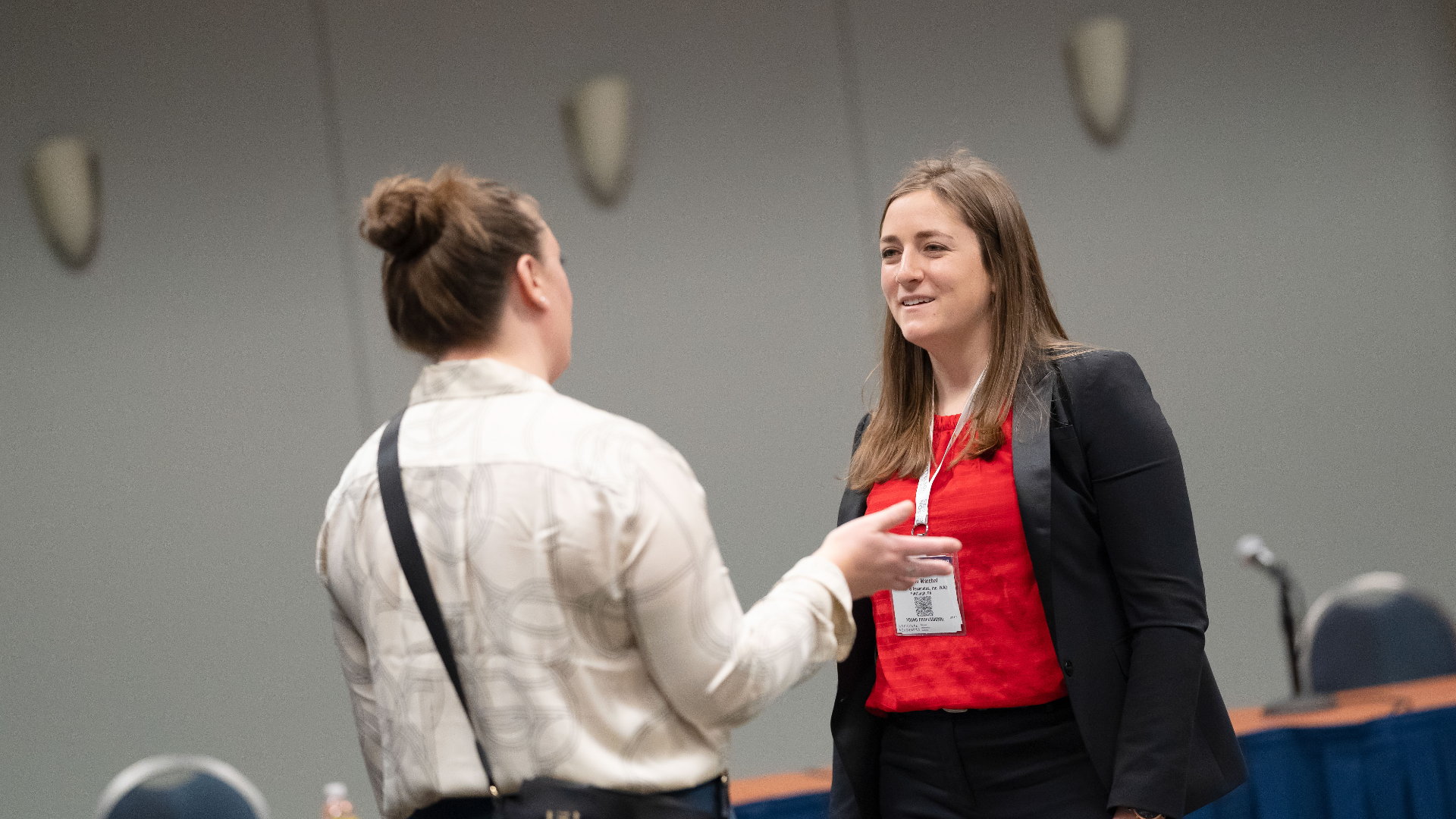
Shannon Warchol and Megan Nelson connect at the end of "Operational Effects of Intersections and Interchanges," presided over by Shannon.
Climate Change and Measuring Resiliency
Conversations around resiliency were plentiful, and we noticed two strong themes emerge, the first being the definition of resiliency and how it can be measured. At the state DOT CEO roundtable, Roger Millar, Secretary of the Washington State Department of Transportation and newly appointed president of AASHTO, noted that many people think about resiliency as climate change/disaster response, but the concept is broader than that. He proposed the definition: “the ability or the need to prepare for and adapt to changing conditions and withstand and rapidly recover from whatever hits us.” While this includes extreme weather events related to climate change, it may also include human-initiated events (such as cyber threats), changes in demographics and related transportation needs (such as people not driving because of their age), and a rapidly changing global economy.
This call for resiliency planning and preparation also requires transportation agencies to develop performance metrics to measure the resiliency of a transportation system and track the value of related investments. However, agencies are still looking for consensus on what those metrics should be. At lectern session 2179, “Quantifying Resiliency: How Do We Measure and Monitor It?”, presenters from Arizona, Colorado, and Virginia DOTs shared insights from robust assessments in their states, but noted the complexity of measuring resiliency and the lack of a single, explicit performance measure that could be offered to “upper management” to capture progress toward this sweeping goal.
The second theme under the resiliency umbrella was the intersection of resiliency and equity. Lectern session 3134, “How Do You Ensure Equity in Transportation Climate Adaptation Projects?”, acknowledged the disproportionately harmful impact that extreme weather events have on underserved populations. With the expectation that climate-induced events will continue to grow in frequency and intensity, it’s imperative we center at-risk populations in resiliency planning efforts.
Breaking Down Silos at TRB and in Transportation
The sixth theme that emerged for us at TRB 2023 was the prominent call to continue breaking down industry silos. Senior Principal Engineer Hermanus Steyn, co-chair of the Standing Committee on Performance Effects of Geometric Design, has seen a growing appetite in his committee for cross-committee discourse and exchange of perspectives to break down the silos that exist in transportation-such as institutional, organizational, and operations/safety/design.
“To develop new research ideas, we need to look from multiple perspectives,” said Hermanus. “We need to team up with other committees to try to close some of the gaps within the industry.”
"To develop new research ideas, we need to look from multiple perspectives. We need to team up with other committees to try to close some of the gaps within the industry."
- Hermanus Steyn, Senior Principal Engineer
Workshop 1054 at TRB 2023, “No Excuse for Ugly Streets Serving Our Communities,” was co-hosted by 11 different committees and was designed to close gaps through committee collaboration. The workshop featured six presentations from multiple disciplines that were all aimed at complete streets implementation, followed by breakout sessions in which attendees swapped ideas.
“I learned a lot from the workshop about the differing perspectives for complete streets, whether it was from the design, environmental, or even the legal side, and I appreciated how each of the presenters piggybacked on the other presentations in the workshop,” said Associate Engineer Zach Bugg. “Finally, the workshop gave me the opportunity to interact with nine other attendees in a small group discussion that resulted in new research need statement ideas.”
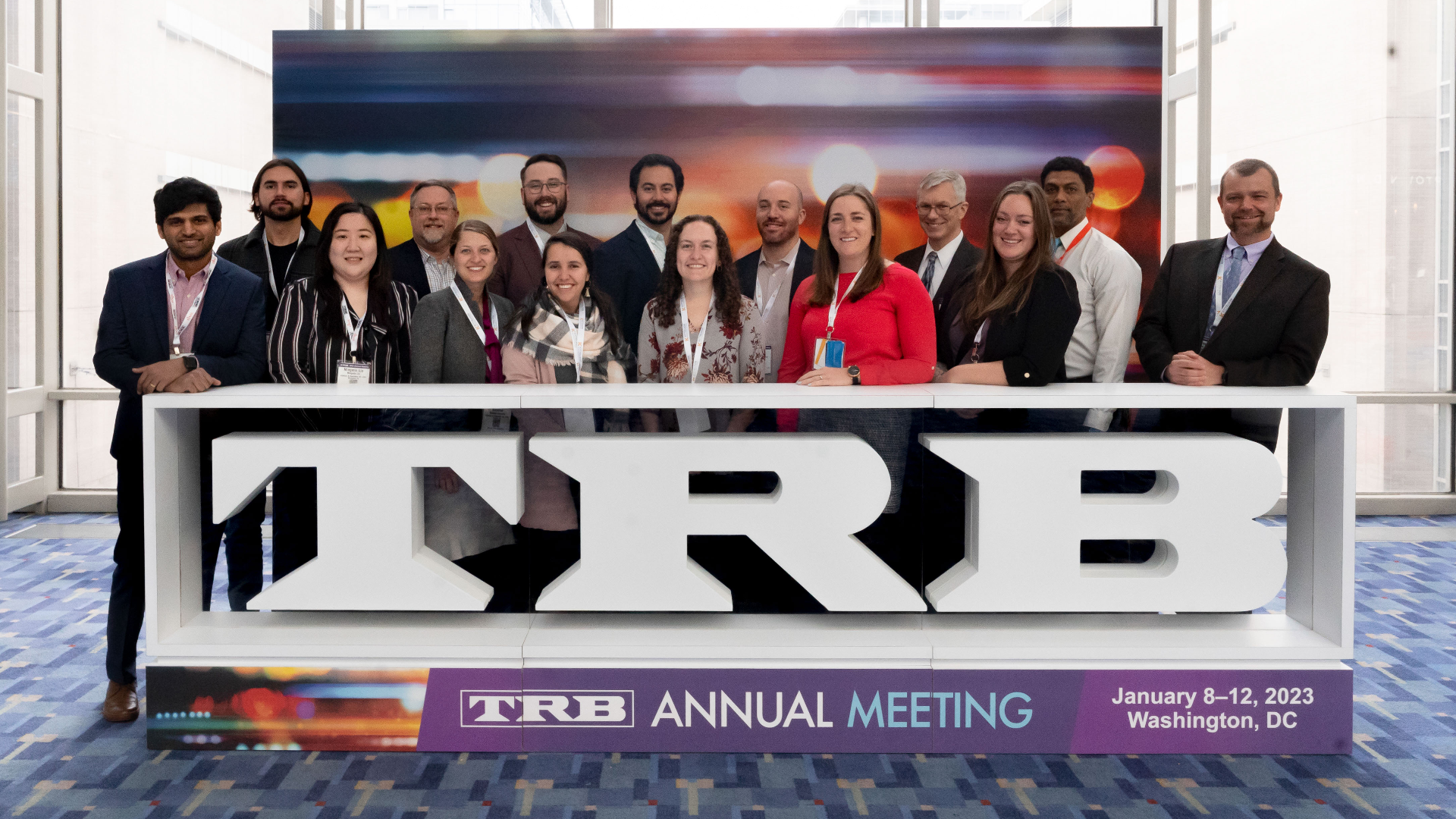
A portion of Kittelson's 60-person cohort at the 2023 Annual Meeting.
What Were Your TRB 2023 Takeaways?
With 10,000 attendees and close to a thousand sessions, we know there were many more important conversations that took place at the 2023 Annual Meeting. If you participated, we’d love to hear your insights and invite you to share them on this LinkedIn thread! Let’s find ways to continue the collaboration that took place within the walls of the Walter E. Washington Convention Center and the Marriott Marquis last week.
